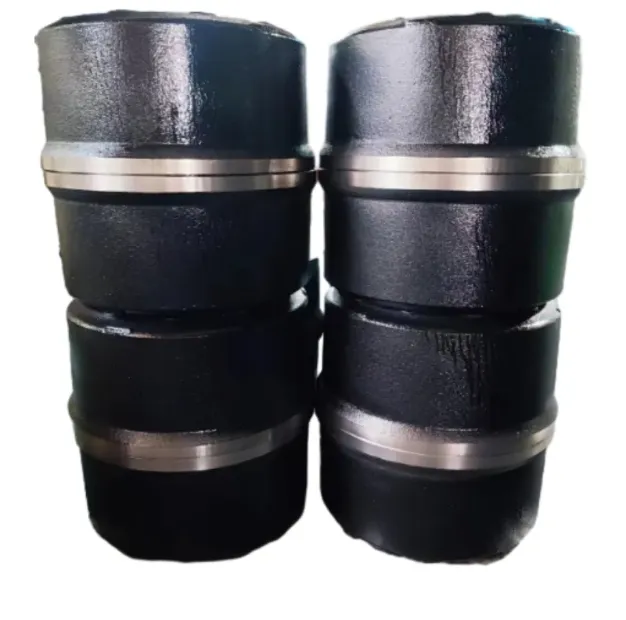Feb . 15, 2025 07:27
Back to list
drum brake wheel cylinder push rod
The drum brake wheel cylinder push rod plays an indispensable role in maintaining the efficiency and safety of a vehicle's braking system. Although often overlooked, this crucial component directly affects the performance of the drum brakes by ensuring effective force transmission from the braking system to the brake shoes, and consequently to the drum itself.
Selecting the right drum brake wheel cylinder push rod replacement requires expertise. Not all push rods are created equal; their differences can affect your vehicle's brake response. Consideration of the vehicle's make and model is necessary, as inappropriate replacements can have adverse effects. Trusted brands and OEM parts are recommended due to their rigorous testing and assurance of compatibility with specific vehicle systems. Authoritative sources like automotive engineering handbooks emphasize understanding the complete braking system architecture when installing or replacing components like the push rod. Proper training is crucial because incorrect installation can lead to brake drag or binding, conditions that could compromise brake safety and effectiveness. An authoritative approach includes consulting factory service manuals or seeking professional guidance to ensure adherence to the vehicle manufacturer's standards. Building trustworthiness within the automotive component domain involves choosing suppliers with transparent business practices and positive reputations. Ensure that any replacement parts, including drum brake wheel cylinder push rods, come with verifiable warranties and customer support. Reading customer reviews and seeking recommendations from certified automotive professionals can also contribute to consumer confidence in selecting quality parts. In conclusion, the drum brake wheel cylinder push rod, though a small and often unnoticed component, is instrumental in ensuring effective braking. Expertise in automotive mechanics, supported by authoritative literature and trustworthy business practices, underscores the importance of this component. Regular maintenance and careful selection of quality parts are key actions that not only enhance vehicle safety but also prolong the lifespan of the braking system, ensuring optimal performance under various driving conditions.


Selecting the right drum brake wheel cylinder push rod replacement requires expertise. Not all push rods are created equal; their differences can affect your vehicle's brake response. Consideration of the vehicle's make and model is necessary, as inappropriate replacements can have adverse effects. Trusted brands and OEM parts are recommended due to their rigorous testing and assurance of compatibility with specific vehicle systems. Authoritative sources like automotive engineering handbooks emphasize understanding the complete braking system architecture when installing or replacing components like the push rod. Proper training is crucial because incorrect installation can lead to brake drag or binding, conditions that could compromise brake safety and effectiveness. An authoritative approach includes consulting factory service manuals or seeking professional guidance to ensure adherence to the vehicle manufacturer's standards. Building trustworthiness within the automotive component domain involves choosing suppliers with transparent business practices and positive reputations. Ensure that any replacement parts, including drum brake wheel cylinder push rods, come with verifiable warranties and customer support. Reading customer reviews and seeking recommendations from certified automotive professionals can also contribute to consumer confidence in selecting quality parts. In conclusion, the drum brake wheel cylinder push rod, though a small and often unnoticed component, is instrumental in ensuring effective braking. Expertise in automotive mechanics, supported by authoritative literature and trustworthy business practices, underscores the importance of this component. Regular maintenance and careful selection of quality parts are key actions that not only enhance vehicle safety but also prolong the lifespan of the braking system, ensuring optimal performance under various driving conditions.
Latest news
-
Brake Drums for Trucks | OEM-Grade, Factory DirectNewsNov.10,2025
-
High-Performance Brake Drums for Trucks | OEM & ISONewsNov.10,2025
-
Brake Drums Built to Last — OEM-Grade, Balanced for TrucksNewsNov.10,2025
-
Brake Drums for Trucks – OEM-Grade, Durable, Low NoiseNewsNov.10,2025
-
Brake Drums for Trucks | OEM, ISO-Certified, Fast DeliveryNewsNov.10,2025
-
Brake Drums: OEM-Grade, Precision Balanced, Factory DirectNewsNov.03,2025
-
Brake Drums: Heavy-Duty, OEM-Grade, Precision-BalancedNewsNov.03,2025


